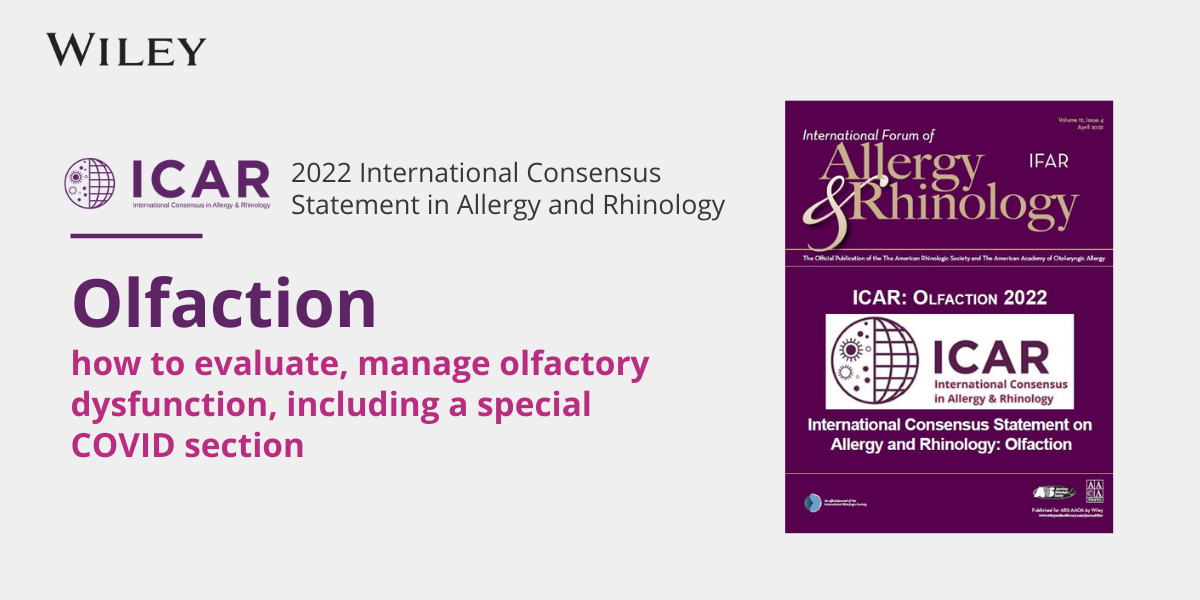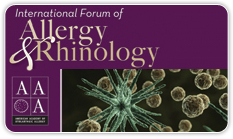
About Us
AAOA SCOPE OF KNOWLEDGE: ALLERGY AND ASTHMA
You can also download The Scope of Knowledge PDF.
I Epidemiology
A. Prevalence
- i Regional
- ii Change Over Time
B. Populations at risk
- i Genetic associations
- ii Environmental associations
C. Socioeconomic impact of disease
- i Direct cost
- ii Indirect costs
- iii Quality of life
II Science of the Sites of Allergic Inflammation
A. Anatomy, Histology, physiology, pathophysiology of:
- i Nose and paranasal sinuses
- ii Pharynx
- iii Ear/Eustachian Tubes
- iv Larynx/Trachea
- v Lungs
- vi Eye
- vii Skin
- viii Gastrointestinal tract
B. Basic physiology, pathophysiology, and principles of:
- i Mucociliary function
- ii Smell and taste
- iii Auditory/vestibular function
- iv Voice
- v Respiratory function
- vi Deglutition
- vii Ocular protection mechanisms
- 1 Naso–lacrimal function
- 2 Conjunctival function
- viii GI function
III Basic Science
A. Basic components, concepts and applications pertinent to Allergy:
- i Immunology
- 1. Function
- a. General aspects
- i Recognition
- ii Surveillance
- iii Amplification
- iv Memory
- b. Triggers of the immune response
- i Allergens, haptens, epitopes, parasites, macromolecules
- c. Categories of response
- i Innate
- ii Adaptive
- a. General aspects
- 2. Components
- a. Inflammatory cells
- i Macrophages (APC)
- ii Lymphoid
- 1 T–cells
- 2 B–Cells
- 3 Null cells
- iii Granulocytes
- 1 Mast Cells/basophils
- 2 Eosinophils
- 3 Neutrophils
- 4 Platelets
- b. Immunoglobulins
- i G
- ii A
- iii M
- iv D
- v E
- c. Inflammatory mediators
- i Cytokines
- ii Chemokines
- iii Vasoactive amines
- iv Leukotrienes
- v Prostaglandins
- vi Complement
- a. Inflammatory cells
- 1. Function
- ii Endocrinology
- iii Neurology
- iv Molecular cell biology
- v Genetics
B. Physiology and pathophysiology
- i Immunology
- 1. Cellular communication
- a. Direct contact
- i Antigen specific
- b. Cytokine/Chemokine mediated
- i Non-antigen specific
- a. Direct contact
- 2. Inflammatory pathways
- a. Cellular
- i Microphage
- ii Granulocyte
- 1 Mast Cell/Basophils
- 2 Eosinophil
- b Non-cellular
- i Complement
- ii Arachadonic Acid cascade
- iii Other
- a. Cellular
- 3. Immune sensitization
- a Memory
- 4. Hypersensitivity (Gel and Coombs)
- a I
- b II
- c III
- d IV
- e V
- f VI
- 1. Cellular communication
- ii Allergic response (Type I)
- 1 Allergy sensitization
- a Antigen processing
- b T-cell
- c B-cell
- d IgE
- e Mast cell
- 2 Subsequent exposure—trigger
- a Mast Cell
- i Antigen crosslinking
- ii Degranulation
- 1 Preformed mediators
- 2 Newly synthesized mediators
- 3 Cytokines
- b Early phase response
- c Late phase response
- i Cellular Components
- d Priming
- a Mast Cell
- 1 Allergy sensitization
- iii Microbiology
- 1 Parasitology
- 2 Bacteriology
- 3 Virology
- 4 Mycology
- iv Endocrinology
- v Neurology
- vi Molecular cell biology
- vii Genetics
- viii Nutrition
IV Diseases, Disorders, and Conditions
A. Differential diagnosis of inflammatory disease:
- i Nose/paranasal sinus
- ii Otologic
- iii Laryngopharyngeal
- iv Tracheobronchial
- v Thoracic/Pulmonary
- vi Gastrointestinal
- vii Ocular
- viii Cutaneous
B. Immunologic disorders
- i. Allergic diseases
- 1. Allergic Rhinitis
- 2. Allergic conjunctivitis
- 3. Otologic disease
- a. Otitis media
- b. Meniere’s
- c. Otitis externa
- d. Eustachian tube dysfunction
- 4. Asthma
- 5 Dermatitis
- a. Eczema
- b. Contact
- c. Urticaria/Angioedema
- 6. Allergic laryngitis
- 7. Gastrointestinal
- a. Eosinophilic esophagitis
- ii Co-morbid conditions impacted by allergy
- 1. Rhinosinusitiss
- 2. Otitis media
- 3. Eustachian tube dysfunction
- 4. Disordered sleep
- 5. Laryngeal/pharyngeal/esophageal disorders
- a. GERD
- 6. Asthma
- iii Immunodeficiency
- iv Autoimmune diseases
V Diagnostics and Assessment Procedures
A. History
- i Symptoms
- 1. Onset, duration, severity
- 2. Triggers
- 3. Exacerbating or ameliorating factors
- ii Exposures
- 1. Temporal relationships
- a. Intermittent
- b. Persistent
- 2. Identifiable antigen
- a. Aeroantigens (Inhalants)
- b. Ingestants
- c. Contactants
- d. Injectants
- 1. Temporal relationships
- iii Co-morbid conditions
- 1. Rhinosinusitiss
- 2. Otitis media
- 3. Eustachian tube dysfunction
- 4. Disordered sleep
- 5. Laryngeal/pharyngeal/esophageal disorders
- a. GERD
- 6. Asthma
- 7. Ocular
- iv Family/childhood history
B. Physical examination
- i Face
- ii Ears
- iii Nose/Paranasal sinues
- iv Oro/Nasopharynx
- v Laryngotracheal
- vi Pulmonary
- vii Skin
C. Adjunctive testing: Indications, limitations, and normal and pathologic findings:
- i Ears
- 1. Audiovestibular testing
- ii Nose
- 1. Acoustic rhinometry/rhinomanometry
- 2. Nasal cytology/biopsy
- 3. Nasal/paranasal sinus culture
- 4. Nasal endoscopy
- 5. Olfactory testing
- 6. Radiologic testing
- iii Larynx
- 1. Laryngoscopy
- iv Pulmonary
- 1. Pulmonary function testing
- 2. Radiologic testing
- v Sleep
- 1. Polysomnography
D. Allergy testing:
-
- i Antigen selection
- 1. Antigen characteristics
- a. Aeroallergen physical characteristics
- b. Biologic activity/potency
- c. Antigen cross reactivity
- d. Antigen extraction/standardization
- 2. Aeroallergen distribution
- a. Principles of distribution
- b. Local and Regional differences
- ii Aeroallergen tests
-
- 1. Expanded specific allergen testing
- a. In vivo
- i Principles of in vivo testing
- 1. Pathophysiology of the skin whealing response
- a. Immediate response
- b. Delayed response
- 2. Factors that affect the skin whealing response
- 1. Pathophysiology of the skin whealing response
- ii Specific methodologies
- 1. Percutaneous (Prick) testing
- a. Single percutaneous (prick) testing
- b. Multi percutaneous (prick) testing
- 2. Intradermal testing
- a. Single intradermal testing
- b. Intradermal dilutional testing
- 3. Blended techniques of in vivo testing
- 4. Scratch testing (mentioned only for historical purposes)
- 5. Provocation
- 1. Percutaneous (Prick) testing
- i Principles of in vivo testing
- b. In vitro
- i Principles of in vitro testing
- ii Methodologies
- a. In vivo
- 1. Expanded specific allergen testing
- 1. Antigen characteristics
- 2. Principles of the allergen screen
- iii Ingestants (Food Allergy)
- 1. History
- a. Food diary
- b. Anaphylaxis
- 2. Testing
- 1. History
- iv Injectants
- v Contactants
- 1. Contact tests (patch)
- iii Ingestants (Food Allergy)
- i Antigen selection
E. Immunologic Evaluation (including rheumatologic)
-
-
- i Humoral
- ii Cellular
-
VI Allergy Treatment
A. Environmental control
B. Pharmacotherapy/pharmacology
-
-
- i Antihistamines
- ii Decongestants
- iii Mast cell stabilizers
- iv Mucolytics
- v Leukotriene modifiers
- vi Corticosteroids
-
C. Dietary control
D. Immunotherapy
-
- i. Desensitization
- 1. Route of delivery
- a. Subcutaneous
- b. Mucosal (e.g., sublingual)
- 2. Mechanism of action/li>
- 3. Indications/contraindications
- 4. Antigen dosing
- a. Starting dose
- b. Escalation
- c. Maintenance
- d Withdrawal
- 5. Mixing of treatment vial
- 6. Duration of therapy
- 7. Outcomes of immunotherapy
- 1. Route of delivery
- ii Monoclonal antibody
- i. Desensitization
VII Allergy Emergencies
A. Epidemiology
- i Risk factors
- ii Recognition
- iii Differential diagnosis
B. Management
- i High-risk population recognition
- ii Preparation
- iii Prevention
- iii Intervention

Register For Live Classes
2017 Advanced Course in Allergy & Immunology
December 6-9 | Vail, CO.
Learn more and Register
2018 Interactive Allergy & Rhinology Course
February 22-24 | Dallas, TX
Save the Date
2018 Basic Course in Allergy & Immunology
July 5-7 | Hollywood, FL
Save the Date
2018 AAOA Annual Meeting
September 14-16 | Philadelphia, PA
Save the Date
Clinical Insights With Wiley
Start Learning Now
Spotlight/News
Recent Blog Articles
Things to Do in Vail Besides Skiing
Long before Vail Mountain became global renown, or even…
AI: Dipping Our Toes into How AI Can and Does Impact?
Takeaways from the One-on-One with Jack Krouse, featuring Anand…
* Adapted from Marple, BF, et al. “American Academy of Otolaryngic Allergy CME Report: Allergy, Scope of Knowledge.” Otolaryngology—Head and Neck Surgery, 136(1): 8-10, 2007 Jan





